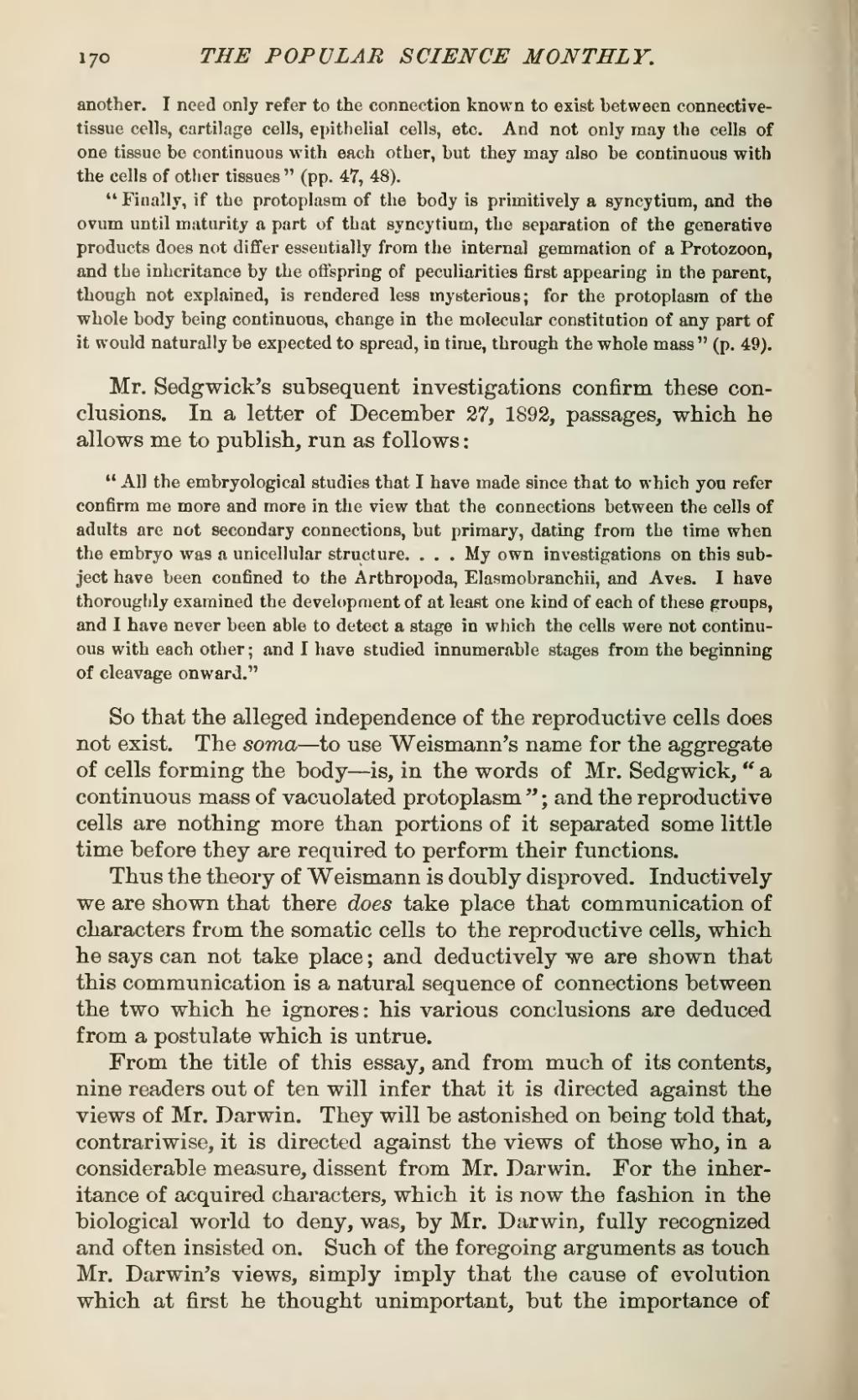another. I need only refer to the connection known to exist between connective-tissue cells, cartilage cells, epithelial cells, etc. And not only may the cells of one tissue be continuous with each other, but they may also be continuous with the cells of other tissues" (pp. 47, 48).
"Finally, if the protoplasm of the body is primitively a syncytium, and the ovum until maturity a part of that syncytium, the separation of the generative products does not differ essentially from the internal gemmation of a Protozoon, and the inheritance by the offspring of peculiarities first appearing in the parent, though not explained, is rendered less mysterious; for the protoplasm of the whole body being continuous, change in the molecular constitution of any part of it would naturally be expected to spread, in time, through the whole mass" (p. 49).
Mr. Sedgwick's subsequent investigations confirm these conclusions. In a letter of December 27, 1892, passages, which he allows me to publish, run as follows:
So that the alleged independence of the reproductive cells does not exist. The soma—to use Weismann's name for the aggregate of cells forming the body—is, in the words of Mr. Sedgwick, "a continuous mass of vacuolated protoplasm"; and the reproductive cells are nothing more than portions of it separated some little time before they are required to perform their functions.
Thus the theory of Weismann is doubly disproved. Inductively we are shown that there does take place that communication of characters from the somatic cells to the reproductive cells, which he says can not take place; and deductively we are shown that this communication is a natural sequence of connections between the two which he ignores: his various conclusions are deduced from a postulate which is untrue.
From the title of this essay, and from much of its contents, nine readers out of ten will infer that it is directed against the views of Mr. Darwin. They will be astonished on being told that, contrariwise, it is directed against the views of those who, in a considerable measure, dissent from Mr. Darwin. For the inheritance of acquired characters, which it is now the fashion in the biological world to deny, was, by Mr. Darwin, fully recognized and often insisted on. Such of the foregoing arguments as touch Mr. Darwin's views, simply imply that the cause of evolution which at first he thought unimportant, but the importance of
